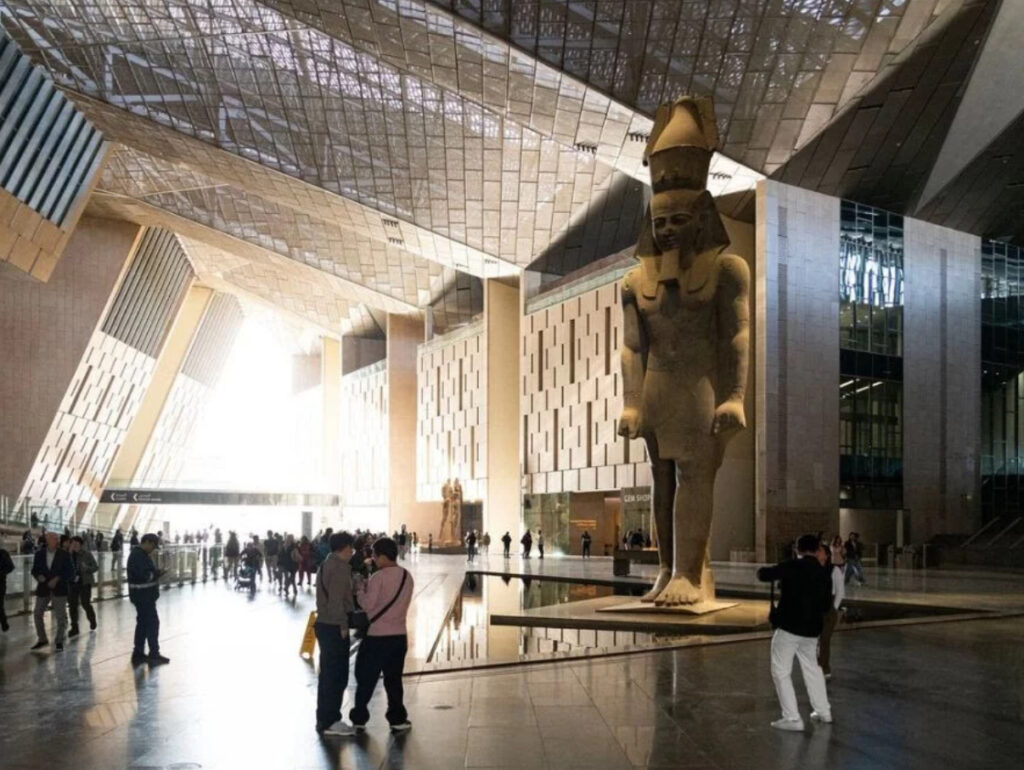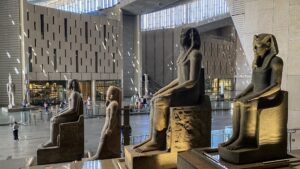After more than a decade of delays, redesigns, budget reshuffles, and public speculation, The Global Museum of Art and Ideas—informally known as The GM—has finally opened its doors. Sort of.
The ambitious cultural project, long billed as the most innovative and international museum of the 21st century, held its inaugural preview this week in a partially completed state, with roughly 60% of its galleries open to the public. The rest? Still under construction, though officials promise full completion by late 2025.
But even in its incomplete form, The GM is already making a statement—about the future of museums, the tension between spectacle and substance, and the evolving role of culture in an era shaped by algorithms and algorithms shaped by culture.
This is not just another museum opening. This is a soft launch of global ambition—and like any grand idea finally forced into the world, it’s beautiful, flawed, and totally captivating.
A Decade in the Making: The Museum That Tried to Do It All
The GM was first announced in 2014 as a joint cultural initiative between several major global cities—New York, Lagos, Mumbai, São Paulo, and Paris—with the vision of creating a decentralized museum network that wasn’t just about collecting objects, but reframing conversations.
A museum of art, yes—but also a museum of systems. Of people. Of conflict and climate. Of influence and ideology. Its mandate was to rethink what a “world museum” looks like when the world is no longer centered on the West.
Designed by starchitect David Adjaye in connection with local collectives across continents, the building was envisioned as a living structure—modular, organic, and built for adaptation. But the dream quickly collided with reality: construction delays, pandemic setbacks, shifting leadership, and a budget that ballooned past $1.2 billion.
Still, the project endured, bolstered by its cultural promise—and an increasingly urgent desire to tell a truly global story through space, art, and interaction.
What’s Actually Open—and What’s Worth Seeing Now
As of opening week, The GM offers a limited, yet compelling, experience:
- Four of its planned seven permanent galleries are open, including “Entangled Histories,” “Planetary Commons,” “The Archive Isn’t Neutral,” and “Bodies in Motion.”
- A rotating “Concept Theater”—an immersive hybrid space for video, performance, and sound art—is active and drawing crowds.
- The café, courtyard, and “public lab” spaces are operational, designed to host workshops, live translations, and cross-border Zoom debates on topics ranging from language extinction to decolonial architecture.
The collection? Intentionally eclectic. You’ll find Ghanaian kente cloth next to climate simulation graphs, a 16th-century Indian map beside speculative design objects from Nairobi’s iHub, and a VR reconstruction of a demolished refugee camp on the Syria-Turkey border.
It’s dense. It’s nonlinear. And in some cases, it’s difficult. But that’s the point.
“This is not a place for easy answers or static beauty,” says interim director Farida El-Tayeb. “This is a place to sit in complexity. To unlearn a little. To think with others, not just about others.”
The Architecture: A Vessel Built for Change
Though partially unfinished, Adjaye’s architectural vision is already on full display—and it’s stunning.
The museum’s façade features rammed earth panels harvested from all five continents, arranged in a gently spiraling formation that references planetary motion and nomadic architecture. Inside, multi-level walkways float without obvious hierarchy, evoking both a market and a meditation space.
Instead of traditional white cubes, each gallery space has its own architectural identity—some cavernous and dark, others sunlit and fluid, with adaptable partitions meant to allow for exhibition reinvention in real time.
Perhaps the most striking feature is the “Open Room”, a central atrium with no artwork at all—just benches, live sound feeds from different time zones, and a massive digital table where visitors can navigate migration patterns, media flows, and AI-generated visual archives in any language.
The Crowd: Who’s Showing Up?
Opening weekend drew a deliberately diverse crowd—not just the typical museum circuit of critics, curators, and donors, but local residents, artists, students, and thinkers from around the world, many of whom had been consulted or contributed to early community programs.
There was no VIP line. No gala. Just guided walkthroughs, live translations, and a constant soundtrack of multilingual buzz.
And while the museum’s digital companion app crashed under early demand, the physical energy inside the building was palpable—not awe, but engagement. People weren’t just looking. They were pausing. Reading. Arguing. Asking questions out loud.
For a space still technically under construction, it already feels more alive than many fully completed museums.
The Criticism: A Beautiful Mess, or Just a Mess?
Not everyone is convinced.
Critics have pointed to the unfinished galleries, the sometimes overwhelming density of information, and the lack of traditional art-historical framing as signs of chaos rather than innovation.
“There’s ambition, yes,” wrote one cultural columnist. “But ambition doesn’t guarantee coherence. At times, it felt like walking through a well-designed think piece with no editor.”
Others have raised concerns about funding transparency, especially around private donors and corporate partnerships that seem at odds with the museum’s activist tone.
But El-Tayeb is unbothered. “This isn’t a completed sentence,” she says. “This is a paragraph still in motion. We’re not interested in being flawless. We’re interested in being relevant.”
The Global Moment: Why This Matters Now
In 2025, the idea of a world museum feels more urgent than ever.
As climate displacement reshapes borders, as digital archives replace physical ones, and as cultural memory becomes both more connected and more contested, the question of who tells the story—and how—is no longer rhetorical.
The GM doesn’t answer that question definitively. But it invites a new kind of participation. It asks visitors to think of themselves not as viewers, but as co-narrators. To sit in the ambiguity. To walk through histories that don’t belong to them—and feel accountable anyway.
That’s not an easy ask. But it might be the most necessary one.
What’s Still Coming: The Full Launch and the Road Ahead
The museum is expected to open fully by December 2025, with the remaining galleries set to include:
- “The Digital Continuum” – A multi-sensory exploration of code, memory, and AI bias.
- “Waterlines” – A climate- and water-rights–focused exhibit with contributions from Pacific Islander communities.
- “After Empires” – A bold curatorial effort to unpack colonial residues in modern infrastructure.
Additionally, the museum plans to launch its Global Fellows Program, bringing together artists, data scientists, historians, and activists from across the world for on-site residencies and collaborative research.
And while the full experience is months away, the museum’s soft opening has already sparked worldwide attention and debate—a sign that maybe the GM doesn’t need to be finished to be felt.
Impression
The GM is not perfect. It’s not even fully open. But in its ambition, its messiness, and its refusal to reduce culture to spectacle, it offers something rare: a chance to experience a museum still becoming itself.
In a world obsessed with polish, precision, and virality, this is a space that asks you to slow down. To wander. To wonder. To get a little lost. And maybe, just maybe, to reimagine what it means to gather, to remember, and to create meaning together.
No comments yet.








